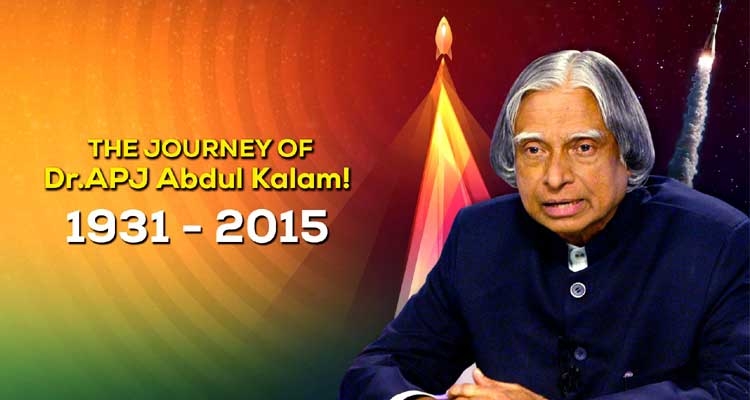India 2020- Dr. Kalam's Vision

It has been three years since Bharat Ratna Dr. A.P.J. Abdul Kalam embarked on his final journey; perhaps, on his death anniversary, we can write the Annexure to his vision of India as a developed country by 2020. With just two years left, that grand vision looks a distant dream, but what he taught more than anything else, was perseverance and self-belief, qualities that epitomises the youth of the new India. The bus may be delayed, but the destination is not too far, and we will get there. This year also marks the 20th anniversary of the publication of the popular and path-breaking India 2020: A Vision for the New Millennium, the book written by Dr. Kalam and the distinguished professor, scientist and administrator, Dr. Y. S. Rajan. Every country needs a vision statement which stirs the imagination and motivates all segments of society to greater effort. It is an essential step in building a political consensus on a broad national development strategy, and this book is often credited with providing the impetus for a new India. The seminal book examined the inherent weaknesses and strengths of the nation and offered a vision for India to rank among the world’s top economic powers by 2020. As the legend goes, the Dr. Kalam vision was inspired by his conversation with a young girl. When asked about her dream, the young girl replied, I want to live in a developed India. India Vision 2020 was initially a document prepared by the Technology Information, Forecasting and Assessment Council of India's Department of Science and Technology, under the chairmanship of Dr. Kalam and a team of 500 experts. These ideas were further developed in the India 2020: A Vision for the New Millennium book. In Dr. Kalam own words, Transforming the nation into a developed country, five areas in combination have been identified based on India's core competence, natural resources and talented manpower for integrated action to double the growth rate of GDP and realize the Vision of Developed India. In June 2000, the Planning Commission of India constituted a Committee on Vision 2020 for India in June 2000 under the chairmanship of Dr. S.P. Gupta, Member, Planning Commission. This initiative brought together over 30 experts from different fields and after more than two years of deliberations, the Report of the Committee on India Vision 2020 was published in December 2002. The committee acknowledged the influence of the 1998 book in the development of the vision document. Dr. Kalam vision was the emergence of India as a nation where agriculture, industry and the service sector work together with symphony. He envisaged the transformation of the economy by doubling of productive capacity of the agricultural and food processing sectors. The vision for 2020 was an India where the rural-urban divide had been reduced to a thin line, with urban amenities available to rural areas. Among the priority areas was to achieve literacy, social security, and overall health for the population. The vision extended to utilisation of information and communication technology for increased e-governance, education in remote areas and state-of-the art facilities like telemedicine. He was far ahead of his times and advocated education through media, communities and social networking, stressing on the correlation between the rate of poverty and illiteracy. It can be said that the concept of Make in India reflects Dr. Kalam vision of strengthening the currency by purchasing Indian manufactured goods. Bharat Ratna Dr. A.P.J Abdul Kalam vision for India to emerge as a destination for the most talented scholars, scientists, and investors from around the world. For that to happen, we need a nation where governance is responsive, transparent and corruption-free, and the seeds for good governance have been sown. However, the vision of total eradication of poverty, illiteracy, crimes against women and children and alienation of some sections of the society, is still a dream. With good governance, there is great hope in the youth of India, and their willingness to channelize their latent energies into nation building. Only then can India transform into a prosperous, healthy, secure, safe, peaceful and happy nation. We may not get here by 2020, but we can certainly aim to forge a sustainable growth path to reach these goals soon thereafter.
Rituraj Phukan
Videos
Videos
Videos
@ignitingmindsmagazine
@IgnitingMindsin
Top Stories
- Dedicated to the Sparrows, Forests and Water
- The United Nations Decade of Ecosystem Restoration
- How technology in agribusiness affects climate change, a concrete solution.
- Restless Youth Seek Climate Action
- Telangana Jagruthi International Youth Leadership Conference 18,19,20th January 2019
- Sports for Climate Action Framework launched at COP24
- COP24: One Week of Misgivings
Videos
Businesses
- Can Home Remedies Increase Your Height.
- Success Comes When We Make Innovation a Habit
- Do You Want to Be a Green Entrepreneur?
- Igniting Minds Official Web Portal Launched in New Delhi.
- Strive To Drive The Life
- Do Mobile Apps Facilitate Small Businessmen?
- Water Conservation, Preservation and Restoration. A Global Engineering Challenge.